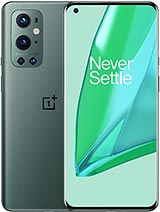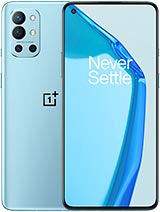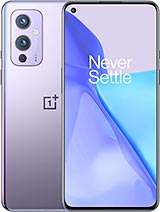OnePlus 9 and 9 Pro review By The Verge
(upbeat music) - It is OnePlus phone review time. There are two new models this spring. This is the OnePlus 9 Pro and it's the version that I'm gonna be focusing on. - And there's also the regular OnePlus 9, which is 240 dollars cheaper. I'll jump in a little bit later and talk about that. - So, OnePlus, you might think of this brand as the upstart challenger that costs way less than the competition, that was the old days.
Or maybe you know the newer OnePlus phones that are aimed squarely at competing with Samsung. OnePlus has done a lot to establish its brand over the years. It's not really a household name yet, but it's not really niche anymore either. Now, in the US, only T-Mobile is selling these phones directly. So it is still a you know, you know, kind of phone, but a lot of people know now.
And one more thing to know is that the price is higher this year. This 9 Pro is 960 bucks for 128 gigs of storage, and it's a 100 dollars more to get to 256. If you add up those new prices and the fact that OnePlus really is an established brand, you see that it's time for the company to take the next step, to become the establishment. The OnePlus 9 Pro isn't a scrapper taking on the big guys, it is a mainstream alternative to the Galaxy S21s of the world in its own right. It's a straight up flagship, let's get into why.
(upbeat music) Now, if you're gonna be the establishment of flagship phones on Android, there is one thing that you cannot skip on and that is specs. OnePlus likes to throw everything but the kitchen sink in and it has certainly done that here. Let's take a look at what we've got. It's got a 6.7 inch 1440 by 3216, LTPO OLED display with 120 Hertz refresh rate, optical fingerprint sensor, 360 Hertz touch response rate, Snapdragon 888 processor, all kinds of 5G, 4500 milliamp battery, dual stereo speakers with a WiFi 6 Bluetooth 5.2 and a new Sony IMX 789 camera sensor. It got 8K 30, 4K 120, 1080 slow-mo at 240, 4K 30 time lapse, 3.3X optical zoom on the telephoto camera, a monochrome like helper aid, Hasselblad partnership. There is a 65 watt wired fast charging.
This fast charger comes in the optional 50 watt, wireless fast charge, et cetera et cetera, et cetera. So, yeah, the specs are there and really the only Android phone that can outclass these specs is the Galaxy S21 Ultra with it's better telephoto lens, but also higher price. Look though, a laundry list of high-end specs is to be expected here. What matters is how well the phone uses them and whether they come together into an integrated whole. And the answer is yes, they do.
Just look at the design here. I don't like this morning mist color way myself but I can't deny that the build quality in this phone is top-notch. If you just look at the tolerances on the aluminum rail and the way the screen curves into it, and even the arrangement of the lenses on the camera bump, this Galaxy S20 is just really, really well-made. That was a joke, because this OnePlus 9 Pro really looks like a Galaxy S20. And I know there's only so many ways that you can sandwich glass and aluminum together, but yeah, wow.
(upbeat music) If I had a complaint, I guess, it's that while the haptics feel nicely tuned and not very buzzy, they're also not very strong. I can barely feel this thing ring in my pocket. One last thing before we get off specs and this is a weird one, both the 9 and the 9 Pro won't support 5G on AT&T. And as of this recording, OnePlus is still waiting on certification on Verizon's 5G network. I have more to say about how the specs translate into the experience of using this phone but we should probably just get to the spec that usually differentiates flagship phones, the camera, because when you're talking about being part of the establishment of flagship phones, there aren't many camera brands more established than Hasselblad.
We have seen camera brand partnerships before on smartphones. I mean, heck Hasselblad itself has done it with things like the Moto mount attachment. The real question is, what exactly does this logo mean? Let's talk about it. Let's just start with the hardware. As I said earlier, there are three cameras on the back plus a helper monochrome camera.
And you know how the Pixel phone has a look that's contrasty and kind of blue, and the iPhone has a look that's very flat and even, and Samsung phones have a look, they turn the vibrancy up to 11, I think with this new camera system and the Hasselblad partnership, we can start to say that OnePlus phones have their own look too. See Hasselblad apparently helped out with the color science here. And I think the result is a melding of those other three phone styles. So I think OnePlus' color tuning tends towards the blue side of colors more so than Samsung anyway, but it is also more vibrant than what you get out of an iPhone or a Pixel. One Plus also really likes to bring up the shadows a lot.
But look, like most smartphone cameras the photos are great in good light. In the dark, I think OnePlus' nightscape mode is a bit too bright for my tastes, but it works really well. So as usual, you have to look at the edge cases and the difficult situations to see where the real differences are. So for example, I think OnePlus adds unnecessary noise sometimes by brightening those shadows. And in general, there is a bit of a processed look from over sharpening, especially on the ultra wide, it can get into trouble with that.
I mean, just look at this fringing. On the other hand, the ultra wide is really good at getting rid of distorted lines on the edges. Now the telephoto lens, it's only 3.3 optical and I think it's actually fine enough at that zoom level. Yeah, and if you try and do digital zoom at up to like 30X, it's just gonna get pantsed by the S21 Ultra. Oh, and there is that monochrome helper camera but if it does anything that you couldn't just do yourself the black and white photo filter, I really couldn't see it.
Finally, the selfie camera is good and that it doesn't over smooth faces. But I do think that OnePlus could have tried a little bit harder to clean up the details on a lot of these photos. The color tuning is fine, but if I'm honest, the Hasselblad influence that I liked the most, is Pro mode, it is great. It's very easy to see what settings you have changed. You can see what's in automode and it even has focus peaking draws that will line or what's it focus? This camera has a relatively narrow focus steps.
So it's super fun to play with what is in focus and what's out of focus. Honestly, I wish my full-on mirrorless camera had an interface that was this good. As for video, well, I mean, OnePlus put up a number, is 8K 4K 120, et cetera, et cetera, and it has big talk about improved HDR but it just doesn't come through. The HDR can't really hold up to an iPhone 12 Pro Max at all and the basic quality and the details, especially in a 4K and especially in 8K, it's just lacking. That was a lot of criticism.
So let me go back and put all of that in context. I am being very picky and I'm comparing this phone to the best of the best, the iPhone 12 Pro Max and the Galaxy S21 Ultra, both of which cost more than this phone. The fact that the OnePlus 9 Pro can hang even a little bit, is a win. So that's the camera system on the OnePlus 9 Pro, but we've also got the OnePlus 9 and by we, I mean my colleague, Alison Johnson, who is reviewing it and who's gonna be coming to this channel more in the future. So let's find out how that phone is different from the Pro version.
- If you're not too concerned with the camera and you wanna save a few dollars, the OnePlus 9 is a really great offer. There are a few notable differences between the 9 and the 9 Pro, beginning with the price. The 9 starts at $730 for eight gigs of RAM and 128 gigs of storage. And then there's the camera. The OnePlus 9 uses a different main image sensor.
It's the same size and pixel count, it's just from last year's OnePlus 8 Pro. The main camera doesn't include optical image stabilization and there's no telephoto lens here either, just digital zoom, which doesn't look great. But you do get the 50 megapixel ultra wide camera which I really like using. And of course there's still a Hasselblad color tuning, which does a nice job with landscapes, but it's kind of a mixed bag overall. Outside of camera stuff, the OnePlus 9 misses out on a few features.
The big one is that there's no IP rating for dust or water resistance. Though, I can tell you from personal experience, a little drizzle doesn't do any damage. The T-Mobile version will have an official IP 68 rating, but it's the exact same hardware as the unlocked version, so make of that what you will. You don't get the faster wireless charging speed. The screen is a bit lower resolution and the display is flat rather than slightly curved.
Oh, and it doesn't support millimeter wave 5G, but no big loss. None of these felt like significant trade-offs to me. The fast refresh rate screen is excellent, the phone is super responsive jumping between apps and scrolling through social media and wired charging is seriously fast. The 6.5 inch screen is big but the phone's tall aspect ratio makes it easier to handle than its dimensions suggest. You won't sacrifice build quality for opting for the more basic model either.
The back panel is Gorilla Glass, just like the Pro, and that's not the case with the Samsung S21 series. Overall, it's a phone I really like using. It just gets out of your way, handling tasks quickly and seamlessly. The interface feels minimalized and grown up and I really love using the ultra wide camera. I've probably used it as much as I used the main camera.
This is a very good premium mid range device, so long as you're okay with some camera trade-offs and its lack of broad 5G support. - Now if you wanna go from the premium mid range, OnePlus 9, to the flagship OnePlus 9 Pro, you have to spend an extra $240. And that's where the rest of the specs and how OnePlus integrates the really comes in. The camera system is a bit of an upgrade, but really performance isn't any better on the Pro. The difference is that the overall experience is nicer.
So the screen is beautiful. OnePlus is using this new kind of OLED called LTPO, which we've seen before on the Apple watch and also the Galaxy S21. It lets OnePlus set the refresh rate, anywhere from 120 Hertz, very high, all the way down to literally one Hertz. That saves battery life and battery life here is very good but just like last year, very variable. If you turn on all of the bells and whistles and use the camera all day, you will definitely kill this thing with screen time under four hours.
With more moderate usage, I can clock in well over six, which for me translates into a day plus. Another experience thing is the fast charging. Yes, it comes with the fast wired charger in the box, but there's also wireless fast charging. So you plug that adapter into a brand new $70, fast wireless charger, is at 50 watts and it will take the phone from zero to full in under 45 minutes. I've tested it a few times now.
It does take a little bit longer if you have the screen on and in ambient mode but bottom line, wicked fast wireless charging. As for the software experience, this applies both to the OnePlus 9 Pro and the regular OnePlus 9. I think that OnePlus' whole vibe is just nice and simple, at least compared to Samsung, which has ads all over its apps. OnepPlus version of Android is called Oxygen OS, it's at version 11, and it now does a better job of not closing apps in the background. Thank you.
But the thing I just keep noticing is the whole aesthetic is just cleaner. My favorite feature is that you can have a swipe down on the home screen, bring up a dedicated widget panel, instead of having them all over different multiple home screens. (upbeat music) The OnePlus 9 Pro is a nice experience because OnePlus has gotten very good at taking all of those specs and integrating them into a more cohesive whole. With the software, the whole thing just feels that little bit smoother than other Android phones and a little bit more chill. Now, sure, the camera is not the best of the best but every now and then it can hang with them.
- As for the OnePlus 9, I didn't find myself missing any of the features that the Pro version offers. If you can live without a telephoto camera, then this is definitely the better value of the two. And it's a nice alternative to some of the pricier Android flagships. - Now for the 9 Pro, I get that saying this flagship is part of the establishment doesn't sound like a compliment. Then I'm also aware that there's like a general vibe among the fan base that OnePlus has kind of gone corporate.
But I mean, come on, every phone is corporate. What I mean is that when you have an established brand, you know what the phone is going to do, what it will be like to use and you trust that it will all work really well. That is the OnePlus 9 Pro, there's no surprises, but there's no gimmicks either. It's just a good phone, a good OnePlus phone. And we know what that means now.
It's been established. Hey, thank you so much for watching. Let me know, what do you think, 9 or 9 Pro? Is it worth the extra money? Discuss down there in the comments right next to the like button and the subscribe button which are really easy to click if you think about it.
Source : The Verge



























